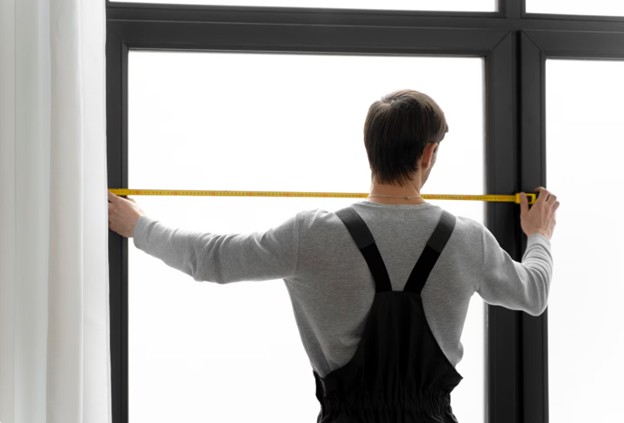Proper preparation before window replacement begins can significantly impact project success, timeline, and your family’s comfort during installation. Taking time to organize your home and understand the process helps contractors work efficiently while minimizing disruption to daily routines. Advance planning also protects your belongings and ensures the best possible results from your investment.
The Window Replacement Timeline
Window replacement projects typically take one to three days depending on the number of windows being replaced and any complications that arise. Single window replacements can often be completed in a few hours, while whole-house projects require more extensive scheduling and preparation.
Weather conditions can affect timelines significantly since windows must be removed before new ones are installed. Contractors may need to reschedule work during storms or extreme temperatures that could damage your home’s interior or prevent proper installation.
Planning for the possible delays helps reduce stress when unexpected issues arise. Old window frames may reveal structural problems, water damage, or code compliance issues that require additional time and materials to address properly.
Interior Preparation & Room Organization
Removing furniture and belongings from areas around windows prevents damage from dust, debris, and construction activities. Window replacement involves cutting, drilling, and material handling that can affect items several feet away from the actual work area.
Wall decorations near windows should be removed or protected before work begins. Vibrations from power tools and material handling can cause pictures and mirrors to fall, possibly causing injury or damage to valuable items.
Flooring protection becomes important when replacing multiple windows or working in rooms with expensive floor coverings. Drop cloths, plastic sheeting, or temporary floor protection helps prevent scratches and debris damage during the installation process.
Exterior Access & Site Preparation
Contractors need clear access to the exterior of your home for material delivery, equipment setup, and installation work. Removing obstacles like outdoor furniture, plants, and decorative items from around windows helps workers operate safely and efficiently.
Lands near windows may need temporary protection or relocation during window replacement projects. Shrubs, flowers, and small trees can be damaged by ladders, equipment, or falling debris if not properly protected or moved.
Parking arrangements should be discussed with contractors before work begins. Installation crews need space for trucks, equipment, and material storage that may require temporary use of driveways or nearby parking areas.
Utility & System Considerations
Window replacement can temporarily affect heating and cooling systems when old windows are removed. Planning for temperature control during installation helps maintain comfort and prevents damage to temperature-sensitive items in your home.
Electrical systems near windows may need temporary disconnection if outlets, switches, or fixtures interfere with installation work. Identifying these conflicts before work begins helps contractors plan accordingly and reduces delays.
Security systems with window sensors require coordination with your security company before window replacement begins. Sensors may need temporary bypass or reprogramming to prevent false alarms during installation.
Permits & Documentation
Most window replacement projects require building permits, particularly when changing window sizes or types. Obtaining permits before work begins prevents delays and ensures installations meet local building codes and safety requirements.
Homeowners association approval may be required for window replacements that change the exterior appearance of your home. Reviewing HOA guidelines and obtaining necessary approvals prevents conflicts and fines after installation.
Documentation of existing windows helps with permit applications and ensures replacement windows meet or exceed current energy efficiency requirements. Photos and measurements of existing installations provide reference information for contractors and building officials.
Material Selection & Delivery Coordination
Window replacement materials require secure storage and protection from weather conditions. Coordinating delivery timing with installation schedules ensures materials remain in good condition and don’t create safety hazards around your property.
Measuring existing window openings helps verify that replacement windows will fit properly and identifies any modifications needed during installation. Small discrepancies in measurements can cause significant delays if not addressed before delivery.
Quality control inspections of delivered materials should occur before installation begins. Checking for damage, correct sizes, and proper hardware helps prevent delays and ensures you receive the products you ordered.
Safety Preparations & Precautions
Children and pets should be kept away from work areas during window replacement for their safety and to prevent interference with installation activities. Designating safe areas and communicating restrictions helps prevent accidents and injuries.
Dust and debris control becomes important for families with allergies or respiratory sensitivities. Sealing off work areas and using air filtration systems helps maintain air quality in unaffected areas of your home.
Emergency contact information should be readily available in case accidents or complications arise during installation. Having contact information for utilities, security companies, and emergency services helps address problems quickly.
Communication & Contractor Coordination
Pre-installation meetings with contractors help clarify expectations, timelines, and procedures for your window replacement project. Discussing concerns and special requirements before work begins prevents misunderstandings and ensures better results.
Daily schedules and progress updates help homeowners plan their activities around installation work. Knowing when specific rooms will be affected allows for better coordination of family activities and work schedules.
Quality control checkpoints during installation allow for corrections before work is completed. Regular communication with contractors ensures any issues are addressed promptly and to your satisfaction.
Post-Installation Considerations
Window replacement cleanup involves removing old windows, packaging materials, and construction debris. Clarifying cleanup responsibilities with contractors before work begins ensures proper disposal and site restoration.
Testing new windows for proper operation, weatherproofing, and security features should occur before contractors leave your property. Identifying any issues immediately allows for prompt correction while crews and materials are still available.
Warranty documentation and care instructions help protect your investment and ensure long-term performance of your new windows. Being aware of maintenance requirements and warranty terms helps maximize the lifespan of your window replacement investment.
Energy Efficiency & Performance Optimization
New window installations may require adjustments to heating and cooling systems for optimal energy efficiency. Consulting with HVAC professionals helps ensure your systems operate effectively with improved window performance.
Window treatments may need modification or replacement when new windows have different dimensions or operating mechanisms than previous installations. Planning for these changes helps complete the aesthetic integration of your window replacement project.
Air sealing around new windows maximizes energy efficiency benefits and prevents drafts that could affect comfort and energy costs. Proper installation includes weatherproofing that should be verified before project completion.
Thorough preparation for window replacement projects helps ensure smooth installation processes, protects your property, and delivers the performance improvements you expect from this significant home investment. Taking time to plan and prepare creates conditions for successful outcomes that provide years of satisfaction and value.

